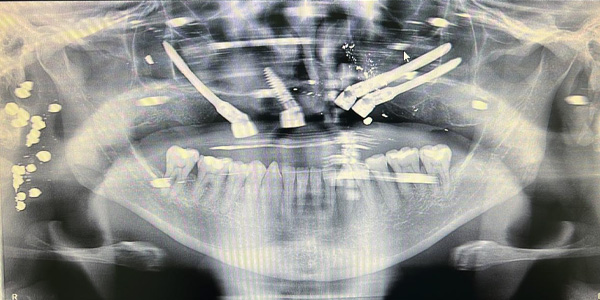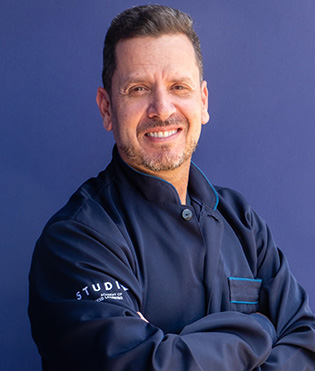Introduction
Implant dentistry has revolutionized the treatment of edentulous patients, offering solutions that restore both function and aesthetics. One of the key challenges in implantology, however, is ensuring the long-term stability of implants, especially in cases where traditional implant placement methods face limitations. Remote anchorage is an innovative approach to address this challenge, providing enhanced stability and support for dental implants in cases with compromised bone quality or insufficient bone volume.
Remote anchorage refers to the use of an anchoring point that is situated away from the intended site of the implant, often involving the use of adjacent or distant structures to provide additional support. This technique, when properly applied, can significantly improve implant stability, reduce treatment time, and optimize outcomes for patients with challenging clinical conditions.
This article will explore the concept of remote anchorage in implant dentistry, its applications, benefits, and how it can enhance the stability of implants, especially in complex or high-risk cases.
1. What is Remote Anchorage?
In implant dentistry, remote anchorage is a technique that involves the use of an anchoring system located away from the implant site, typically leveraging structures in the jaw or adjacent tissues that can support and stabilize the implant. While traditional implant procedures rely on the immediate surrounding bone and soft tissues for stability, remote anchorage looks beyond the immediate area of the implant, drawing support from further away.
The concept of remote anchorage has evolved primarily in response to the increasing need for implants in patients with insufficient bone volume in the intended implant site. In such cases, relying solely on the surrounding bone might not provide adequate stability, which could compromise the long-term success of the implant. By using structures located remotely, such as the zygomatic bone, the mandible, or even other skeletal structures, remote anchorage can improve the functional integration of implants.
A. Mechanism of Action:
Remote anchorage works by redirecting or distributing the forces of chewing and occlusion from the implant to a more stable or dense bone structure, ensuring that the implant remains functional even when the surrounding bone is insufficient or compromised. This is especially helpful in patients with conditions such as bone resorption, maxillary atrophy, or poor bone quality, where traditional implants might fail due to lack of proper anchorage.
2. Applications of Remote Anchorage in Implant Dentistry
Remote anchorage is primarily used in complex cases where traditional implant placement is not feasible. The following are some of the key scenarios where remote anchorage is beneficial:
A. Severe Maxillary Atrophy
In patients with severe maxillary atrophy, particularly in the posterior region, there is often not enough bone volume or density to support traditional dental implants. This condition can occur due to prolonged edentulism, trauma, or certain systemic conditions that result in bone resorption. In these situations, zygomatic implants serve as a form of remote anchorage.
Zygomatic implants are anchored into the zygomatic bone (cheekbone) instead of the maxillary alveolar ridge. These implants, typically longer and placed at an angle, provide stability in the absence of sufficient maxillary bone, distributing occlusal forces to the more robust zygomatic bone. This form of remote anchorage allows for the placement of implants even in the most challenging cases, enabling patients to regain functional and aesthetic restoration.
B. Insufficient Bone for Conventional Implants
For patients who have lost significant bone volume due to tooth loss or trauma, traditional implant placement may not be an option. Bone grafting can be an expensive and time-consuming procedure, with uncertain outcomes. Remote anchorage offers an alternative, reducing the need for grafting by utilizing existing anatomical structures, such as the zygomatic bone, mandible, or even the pterygoid process.
In cases of lower jaw atrophy, mandibular implants can be placed with the aid of remote anchorage, using surrounding structures for additional support. Similarly, in the upper jaw, pterygoid implants (which anchor into the pterygoid bone) can be used as part of a remote anchorage strategy to bypass the need for bone grafting.
C. Immediate Loading in Full Arch Reconstructions
One of the significant advantages of remote anchorage is its ability to enable immediate loading in full-arch reconstructions. In cases of severe atrophy, patients often require a full-arch restoration to restore both functionality and aesthetics. Zygomatic and pterygoid implants, when used for remote anchorage, allow for immediate loading with temporary prosthetics after placement, significantly reducing the overall treatment timeline. This immediate stability can be particularly beneficial for patients who are concerned about extended periods of edentulism.

Get full access to this article, many others published weekly, and a library of exclusive resources by becoming an ADI MEMBER today. Stay informed, expand your knowledge, and connect with leading professionals in dentistry.
Already a member? Login Now












